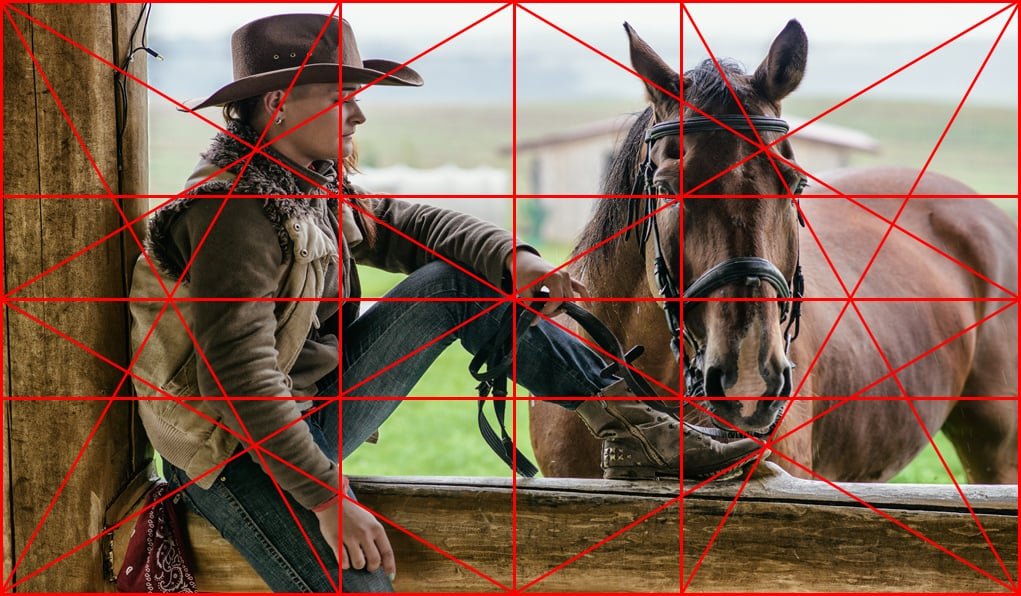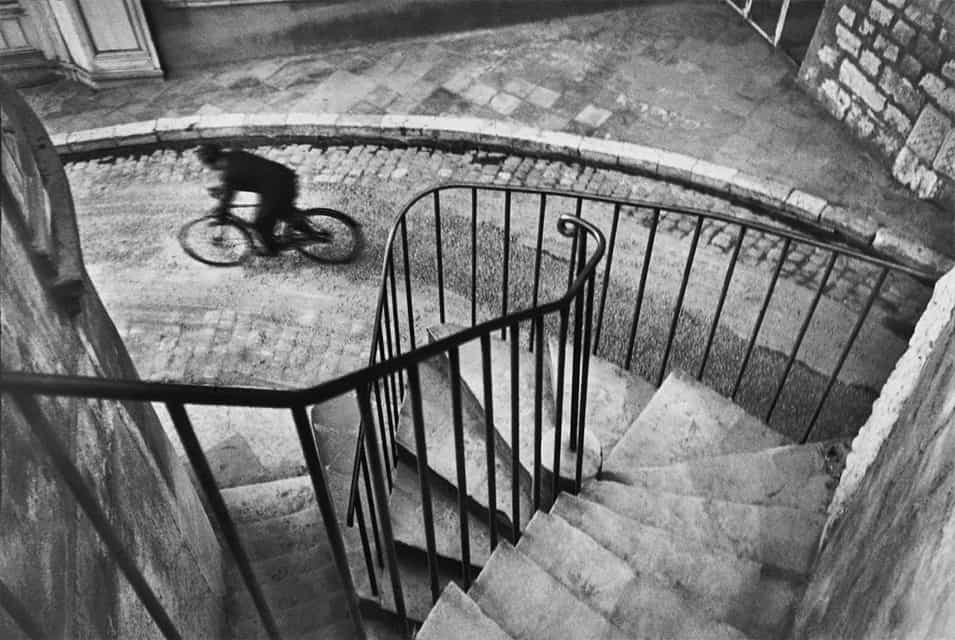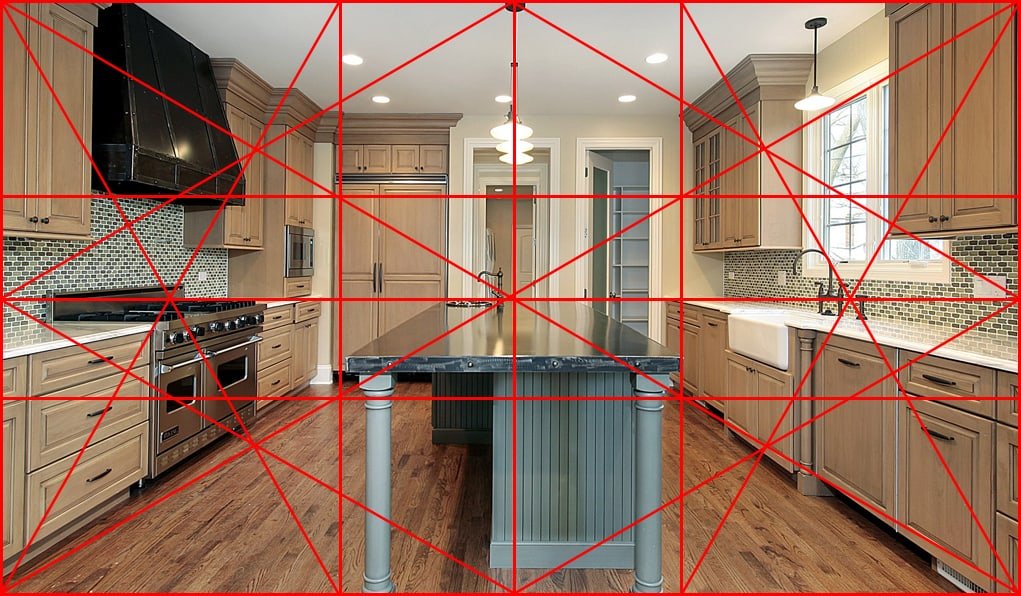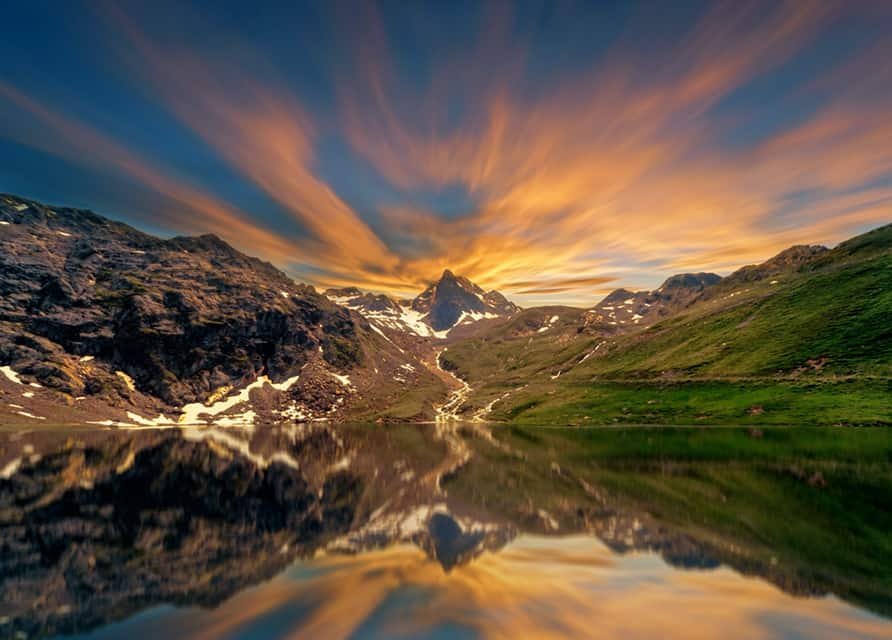Composition is challenging for many beginner photographers. It is one key element in any great photo. Some photographers compose their images intuitively. Others take a more mathematical approach and use techniques like dynamic symmetry.
In this article, we’ll take a look at what dynamic symmetry is and how and why you may want to use it in your photographs.

What is Dynamic Symmetry in Photography Composition?
Dynamic symmetry composition arranges elements in the frame using a dynamic symmetry grid. This is a series of lines that dissect the rectangular shape of your frame.
Dynamic symmetry in art has been used since ancient times. Painters, sculptors, and others have used dynamic symmetry grids to guide the structure of their compositions. They have done this for thousands of years.
Master painters have used dynamic symmetry grids to create some of the most famous paintings. This technique is seen more commonly in art forms other than
Using dynamic composition in

How is a Dynamic Symmetry Grid Made?
Dynamic symmetry grids can appear a bit like the rule of thirds on steroids. It’s about fitting the elements in your composition into a certain grid structure.
The rule of thirds positions elements in the composition at the intersection of simple grid lines.Two lines dissect your frame on both the horizontal and vertical. They break it up into thirds. Many cameras have viewfinder and screen overlays to guide you when using the rule of thirds.
Dynamic symmetry grids are made with a lot more lines. They run horizontal, vertical, and along diagonals.
Traditional design happens most often in a rectangle. Within a rectangle, there are relationships of geometry. These happen between the lines and where they intersect.
In this video, artist and teacher Myron Barnstone gives a concise introduction to making dynamic symmetry grids.

What’s the Difference Between Dynamic Symmetry and Symmetry in Composition?
Symmetry is the quality of something made up of the same shapes or parts facing each other or around an axis. Think of a circle divided exactly in half, or of a butterfly with its wings open. It’s one half of something with its reflection. It is simple, harmonious, and pleasing to the eye.
Dynamic symmetry is complicated. It is harmonious and pleasing to look at, but it is not always simple. It is a framework made up of the relationships of lines that dissect a rectangle with symmetrical relationships.

How Practical is it to Use Dynamic Symmetry Grids While Taking Photos?
Artists who understand dynamic symmetry use it to guide how they compose their art. They do this because it works and because they have time.
A painter takes longer than a fraction of a second to produce their art. Most photos are made in a split second.
This is different when you are taking a photo. With a camera in hand, it’s unlikely you’ll take the same amount of time to compose a photo as a painter does with their art. Time to contemplate is rare in many genres of
Street and documentary are
Some photographers are more methodical and mathematical in composing. They like to place their camera on a tripod and align everything within their frame. They like matching up elements in their frame precisely within dynamic symmetry grids. However, I have never met a photographer who always works like this. I wish I had.

How Did Henri Cartier-Bresson Use Dynamic Symmetry?
The renowned photographer Henri Cartier-Bresson is known for his use of dynamic symmetry. He’s more famous for coining the term ‘The Decisive Moment’.
These two aspects of

Cartier-Bresson mastered both famously. Often he would find a scene to photograph and frame-up his composition. Then he would wait. He would anticipate some pending action and photograph it at the perfect moment. Thus, he created incredible photographs combining dynamic symmetry and the decisive moment.
See if you can find any dynamic symmetry grids to overlay onto this Cartier-Bresson composition.

What Photography Genres are Most Suited to Using this Technique?
Dynamic symmetry in the art of painters and other visual artists who don’t use cameras is much more common than it is with photographers.
Photography genres that allow more time for composition are more like painting. They allow the photographer scope to experiment with composition and the variables that influence it.
Landscape, architecture, and still life

Try and photograph a football game or a bird in flight and apply dynamic symmetry grids as you compose. Don’t let me say it’s impossible, but it is certainly highly unlikely that you could. If it does happen it will probably be by coincidence.
You can do a quick online search and find many examples of photos that people have overlaid dynamic symmetry grids onto. Doing this they show where a baroque diagonal happens or the golden ratio. This does not mean the photographer who created the image previsualized the design of their composition using such a grid.
Performing another online search will present you with a myriad of results. These will show root rectangles highlighting the golden ratio that master painters use. It’s not common for modern art schools to teach this type of design in composition. It’s more unlikely you’ll discover many photographers who often use these design techniques.
How Do You Draw a Dynamic Symmetry Grid?
Photographers have used dynamic symmetry and the golden section to overlay onto their photos after they have taken them. During post-production, this can help in cropping a composition more effectively.
This video provides a good overview of what you need to do to draw a grid. It covers the baroque angle, reciprocal angle, and sinister angle.

How Do You Use A Grid in Composition?
The most practical way to start using this technique in your
Find or create for yourself a collection of templates you can use to lay over your photos. This can even be done using photoshop actions.
Try doing this with any image you like the composition of and an image that you are not so happy with the composition. By making this kind of comparison you will learn to see the lines and relationships they have. Practice this technique enough and you’ll find that you will start seeing compound rectangles and the golden section all around you.
These are present everywhere in nature. Be aware that this design is in everything that’s naturally created. You’ll also see it in the work of master painters, sculptors, architects, and others who have studied graphic design.

Is it Realistic to Use Dynamic Symmetry in Your Photos?
For most photographers and in most genres it is not practical to use dynamic symmetry when you are composing your image in-camera. Making use of a grid overlaid on your photographs after you have taken them is more practical.
Like anything, the more you practice, the better you will become. Starting out by trying to implement the use of dynamic symmetry when you are taking photos will most likely frustrate you. There are exceptions, which I have mentioned earlier in this article.
Learning to use dynamic symmetry in your photos is made easier by studying each image you like. Using a grid will show where the lines of dynamic symmetry lie in a photo. As you do this often it will become a part of your thinking.

Practice Helps You Learn Any Technique
As with many things in
With
Too many beginner photographers, and even those who are more advanced, neglect to practice the skills needed to develop to a master level. When you practice you incorporate what you learn into your subconscious. This allows you to use what you have learned without having to specifically concentrate on it. You do it intuitively.
You can learn to use dynamic symmetry in this way if you study it and after you spend a lot of time practicing.

Have You Used This Technique In Your Photography Composition?
Does the genre of
Please share your comments, and the photos you’ve made using dynamic symmetry composition, below.









